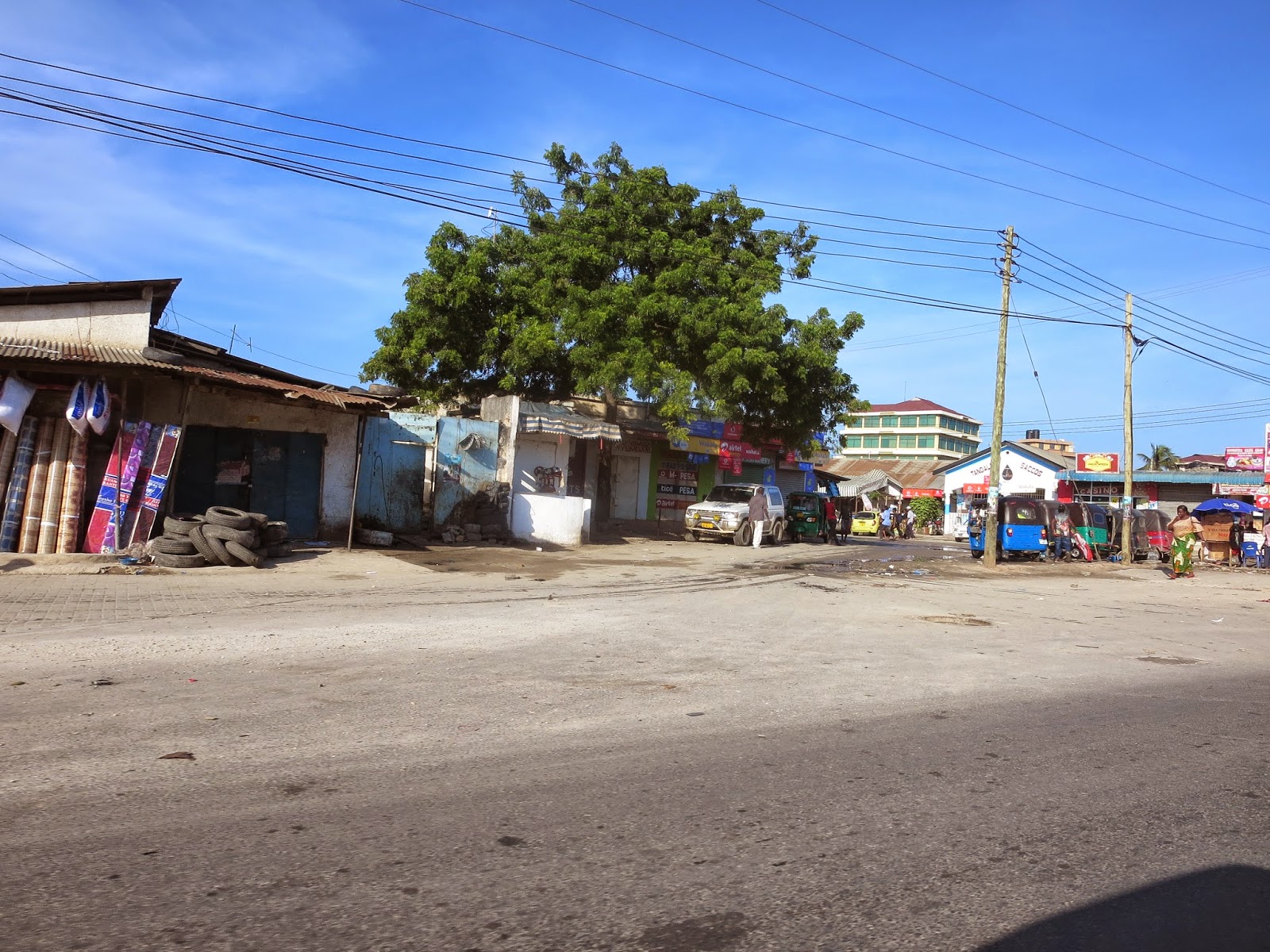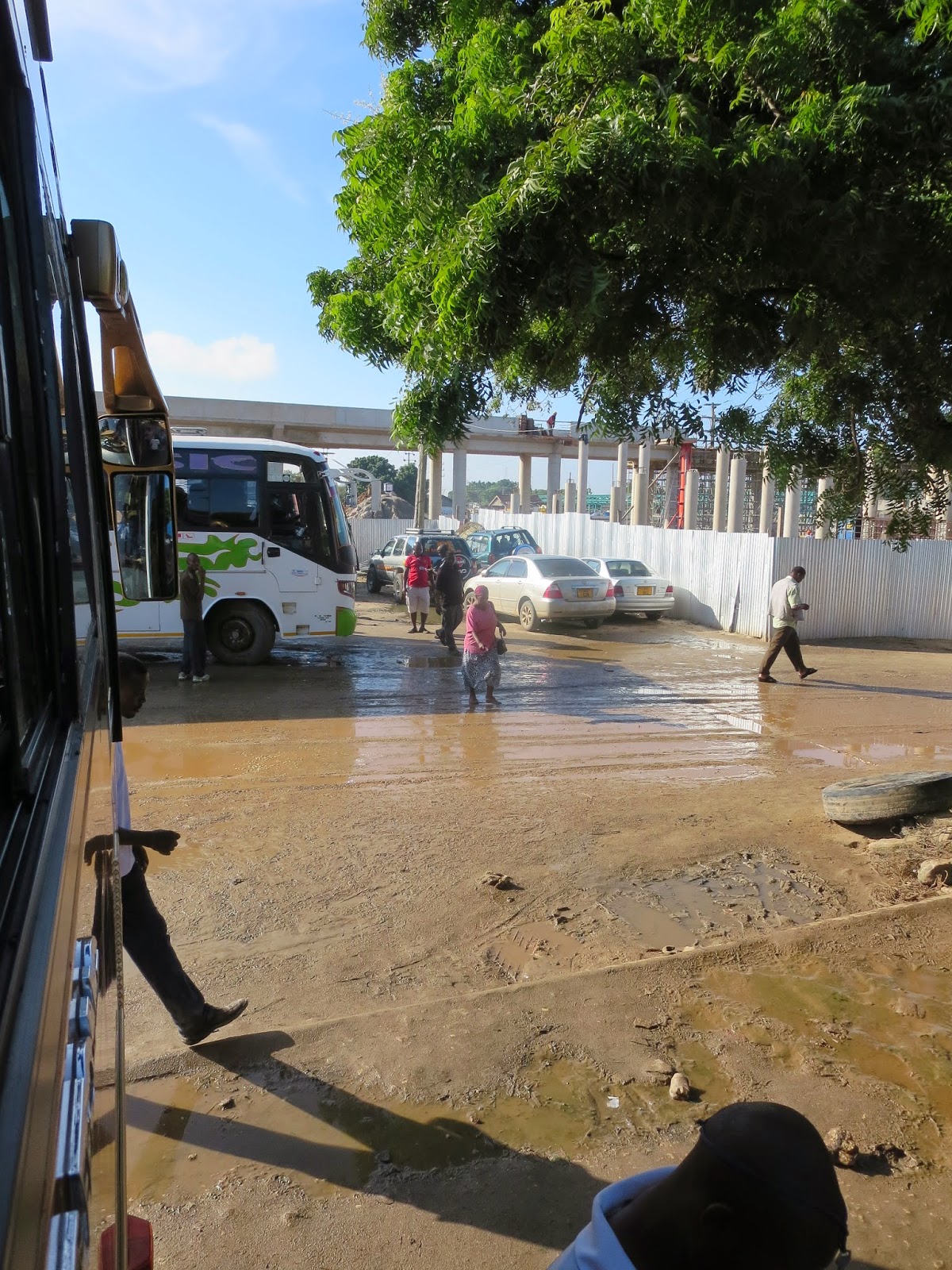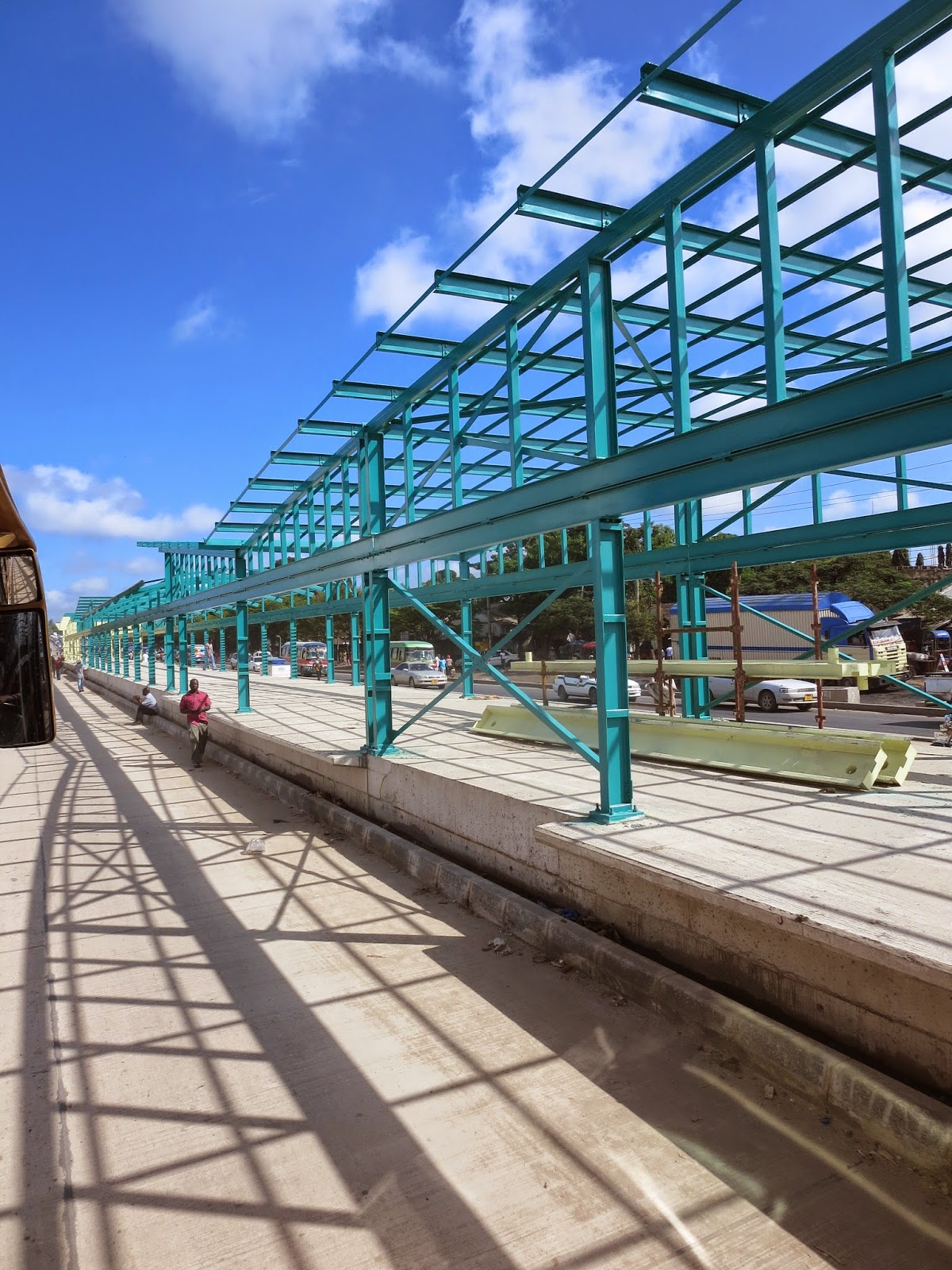When we travel to Dar from Iringa being VSO volunteers we have to take the cheapest
option, which means the bus. It is a 9-hour journey
on a good day, with 2 toilet stops (at actual toilet stops, not just in
the bush! That's when we take the bus to Sumbawanga...). But it is single-lane carriageway all the way, with mainly lorries and buses hurtling along at top speed. We calculated that we passed an average of 3 wreckages on every bus trip we took....and we did many bus trips. Mostly they were wreckages of lorries, but occasionally we saw cars and buses too. You would always see ripped tyres by the side of the road too: probably mangled from when the vehicle came off the edge of the paved road to overtake (or avoid being hit when being overtaken).
When a vehicle has broken down it is a legal requirement to display a hazard warning triangle, however many still tend to use a traditional method which seems also very effective: placing branches (hopefully already fallen ones and not torn fresh from a tree) on the road at several intervals leading away from each side of the vehicle:
We also get a free safari,
passing through Mikumi National Park for about 50km. Unfortunately we
are usually travelling too quickly to take quality photos of the animals
but it's always fun to look out for them and get excited when we spot a
giraffe, or zebra, or impala, or elephant, or monkey! It always makes
the locals on the bus laugh too when they see us get so excited. I have taken a few of the landscape so you get an idea at least of what it's like:
As you get nearer to Iringa, the mountains start to appear and the landscape becomes even more beautiful.

































































































